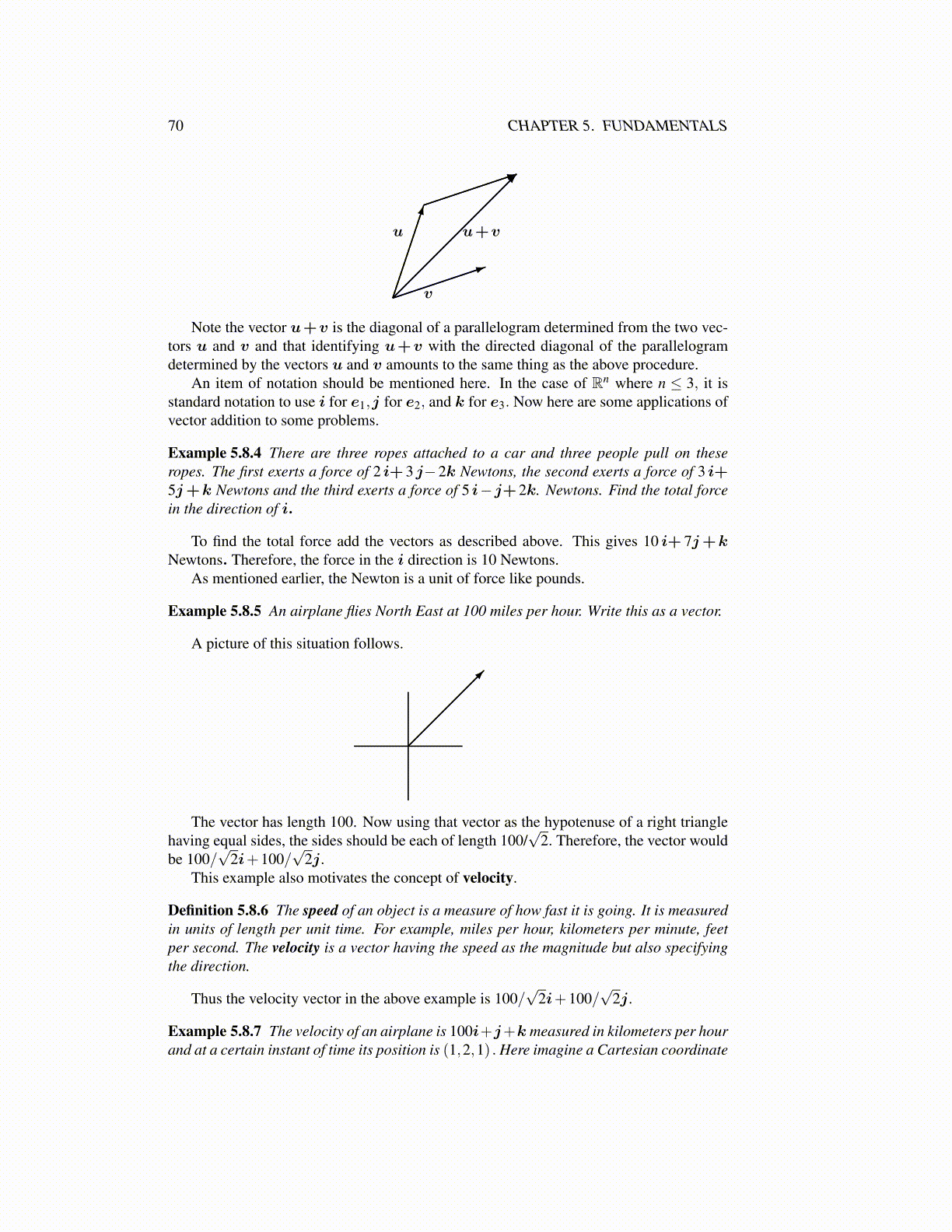
70 CHAPTER 5. FUNDAMENTALS
u
v
u+v
Note the vector u+v is the diagonal of a parallelogram determined from the two vec-tors u and v and that identifying u+v with the directed diagonal of the parallelogramdetermined by the vectors u and v amounts to the same thing as the above procedure.
An item of notation should be mentioned here. In the case of Rn where n ≤ 3, it isstandard notation to use i for e1,j for e2, and k for e3. Now here are some applications ofvector addition to some problems.
Example 5.8.4 There are three ropes attached to a car and three people pull on theseropes. The first exerts a force of 2 i+ 3 j− 2k Newtons, the second exerts a force of 3 i+5j+k Newtons and the third exerts a force of 5 i−j+2k. Newtons. Find the total forcein the direction of i.
To find the total force add the vectors as described above. This gives 10 i+ 7j+kNewtons. Therefore, the force in the i direction is 10 Newtons.
As mentioned earlier, the Newton is a unit of force like pounds.
Example 5.8.5 An airplane flies North East at 100 miles per hour. Write this as a vector.
A picture of this situation follows.
The vector has length 100. Now using that vector as the hypotenuse of a right trianglehaving equal sides, the sides should be each of length 100/
√2. Therefore, the vector would
be 100/√
2i+100/√
2j.This example also motivates the concept of velocity.
Definition 5.8.6 The speed of an object is a measure of how fast it is going. It is measuredin units of length per unit time. For example, miles per hour, kilometers per minute, feetper second. The velocity is a vector having the speed as the magnitude but also specifyingthe direction.
Thus the velocity vector in the above example is 100/√
2i+100/√
2j.
Example 5.8.7 The velocity of an airplane is 100i+j+k measured in kilometers per hourand at a certain instant of time its position is (1,2,1) . Here imagine a Cartesian coordinate